Top Resting Face Types and How to Improve Your Expression
Do people often misinterpret your mood because of your resting face? Facial symmetry plays a crucial role in how others perceive our resting face. This comprehensive guide on resting face types and how to enhance them is here to assist. Explore common resting faces, such as Resting Bitch Face (RBF), Tired Resting Face, and Angry Resting Face, and uncover strategies for improving them.
Key Takeaways
- Common resting face types include Resting Bitch Face (RBF), Tired Resting Face, and Angry Resting Face, all of which can impact social perceptions despite not accurately reflecting emotions.
- Both genetics and aging significantly influence resting facial expressions, with habitual expressions further shaping how faces appear at rest.
- Non-surgical options like BOTOX® Cosmetic, dermal fillers, facial contouring, and facial exercises, along with surgical procedures, offer various pathways to improve resting facial expressions and self-esteem.
Common Resting Face Types
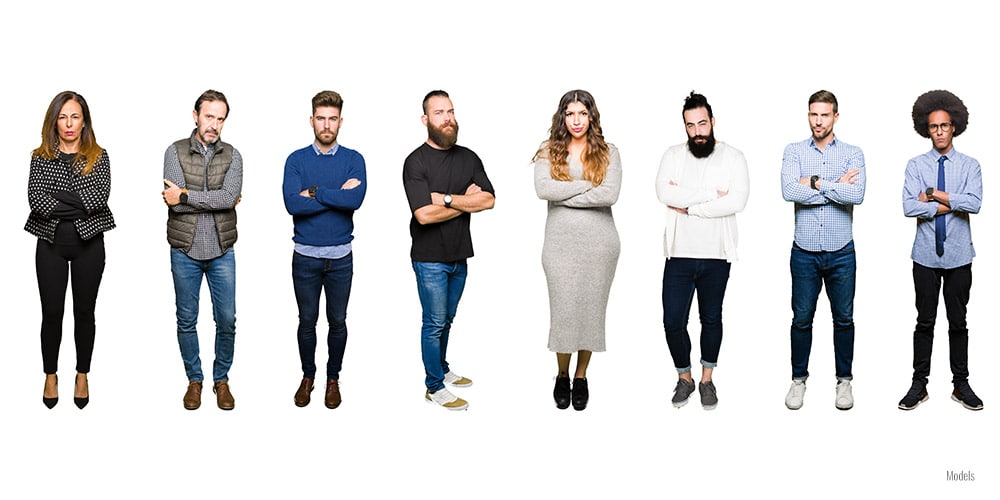
Resting face types are as distinctive as the individuals who have them. Shaped by a blend of genetics, environmental factors, and habitual facial movements, these expressions often convey a narrative that may not reflect reality. Some of the most prevalent resting face types include Resting Bitch Face (RBF), Tired Resting Face, and Angry Resting Face. Each type possesses unique characteristics and societal perceptions that can shape how others perceive us.
Understanding these common types can help us navigate social interactions more effectively. For instance, while RBF might lead others to perceive someone as cold or unapproachable, a tired resting face could be mistaken for a sign of poor health or emotional distress. Similarly, an angry resting face might provoke negative reactions, even when no hostility is intended. Facial contouring can be a useful technique to improve the appearance of these resting face types.
Facial symmetry is another factor that can influence how our resting face is perceived, with more symmetrical faces often seen as more attractive and approachable.
Taking a closer look at these three types can provide valuable insights into their characteristics and impressions.
Resting Bitch Face (RBF)
Resting Bitch Face, or RBF, has become a cultural phenomenon, often referenced in social media memes and popular culture. A furrowed brow marks RBF, downturned mouth corners, and eyes that lack expression, often giving off a less-than-pleased demeanor. This facial expression, colloquially known as a bitchy resting face, often results in individuals being perceived as cold or angry, even when they are actually feeling completely neutral.
Facial symmetry can also play a role in how RBF is perceived, with more symmetrical faces often seen as more attractive and less harsh.
The term RBF first gained media attention in 2013 and continues to influence contemporary culture, with public figures like Kristen Stewart often cited as examples. Other notable public figures, such as Kanye West, Anna Kendrick, and Queen Elizabeth II, have also been analyzed in this context. Despite its name, having an RBF does not mean someone is actually experiencing negative emotions. It is more about how their facial muscles naturally position themselves at rest, often due to a combination of genetics and habitual expressions linked to stress or anxiety. FaceReader software is employed to evaluate the facial expressions of these notable public figures, revealing hidden emotions and providing an objective analysis of expressions frequently associated with Resting Bitch Face (RBF).
Although RBF can present social challenges, it does not accurately reflect someone’s feelings or personality. Recognizing this can reduce negative perceptions and reactions associated with this expression.
Tired Resting Face
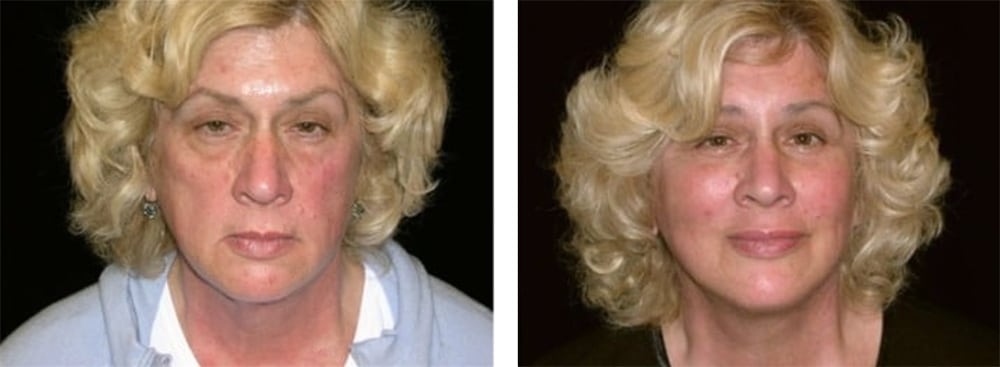
Tired Resting Face is another common type, characterized by droopy eyelids and dark circles under the eyes, giving an overall fatigued appearance. As individuals age, the characteristics of a tired resting face become more pronounced due to the reduction of facial fat and muscle tone, leading to sagging skin and altered facial contours. This type of resting face can be particularly challenging because it is often mistaken for signs of poor health or emotional distress, affecting social interactions.
Facial contouring can help address the signs of aging associated with a tired-looking face at rest, providing a more youthful and refreshed appearance.
The aging process plays a significant role in developing a tired resting face. As the skin loses elasticity, features like sagging skin and deeper lines become more apparent, further contributing to this appearance. Recognizing how aging affects our facial expressions can guide us in finding suitable ways to address and improve these signs.
Angry Resting Face
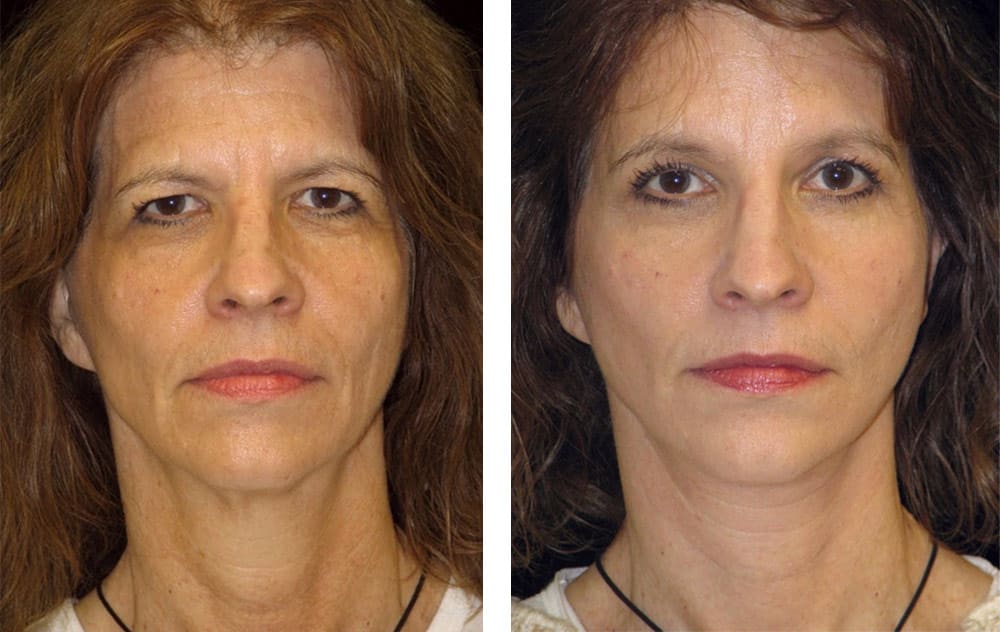
An Angry Resting Face is characterized by tense facial muscles and a furrowed brow, creating an impression of hostility or annoyance. This facial expression can lead to premature judgments, with others often perceiving the individual as unapproachable or unfriendly. Facial symmetry can also influence how an angry resting face is perceived, with more symmetrical faces often seen as less harsh. Despite these misconceptions, an angry resting face does not necessarily reflect the person’s actual emotions.
To improve an angry resting face, one can engage in facial exercises, practice relaxation techniques, and become more aware of habitual expressions. Addressing muscle tension and habitual expressions can lead to a more relaxed and friendly appearance.
Causes of Different Resting Faces
Learning about the causes of different resting faces offers valuable insights into how to manage and improve them. The main factors include genetics, aging, and habitual expressions, and each plays a crucial role in shaping our resting facial expressions and how others perceive them.
Genetics significantly influence our facial structure and natural expressions. Aging, on the other hand, causes changes in facial muscles and skin elasticity, leading to variations in how our faces appear at rest. Habitual expressions, formed by repeated facial movements, can become ingrained in our resting faces over time.
Facial symmetry is another factor that can influence how our resting face is perceived, with more symmetrical faces often seen as more attractive and approachable. FaceReader software, developed by Noldus Information Technology, provides a scientific approach to understanding Resting Bitch Face (RBF) by analyzing facial expressions to reveal underlying emotions.
Exploring each of these causes in detail can help us understand how they contribute to different resting face types.
Genetics and Facial Structure
Genetic predispositions play a significant role in determining an individual’s resting facial expression. The facial features and expressions we inherit from our parents can shape the structure and appearance of our faces, including those seen in RBF. For example, a particular eyebrow position or mouth shape can be passed down through generations, influencing how our faces look when at rest.
Facial symmetry, which is often inherited, can also play a significant role in how our resting face is perceived.
Recognizing the genetic aspects of facial expressions can explain why certain resting face types are more common in some families. This knowledge can also help find suitable ways to manage and improve our resting facial appearance.
Aging Effects
As we age, our skin loses elasticity, and our facial muscles change, leading to noticeable alterations in our resting facial expressions. Features such as droopy eyelids and dark circles become more prominent, contributing to a tired or aged appearance. These changes can affect how others perceive us, often leading to misconceptions about our emotional state or health.
Facial contouring can help address the signs of aging, providing a more youthful and refreshed appearance.
Understanding how aging impacts our facial expressions is crucial for finding effective ways to address these changes. Whether through skincare routines, facial exercises, or more advanced treatments, there are various options available to help maintain a youthful and vibrant appearance.
Habitual Animation and Less-Than-Pleased Expression
Over time, the emotions we frequently display can become permanent aspects of our resting facial expression. Consistently frowning or displaying other negative expressions can lead to a resting face that unintentionally communicates irritation or displeasure. This phenomenon is due to muscle memory and repeated use of specific facial muscles, making it important to be mindful of this entire smiling process.
Facial symmetry can also influence how habitual expressions are perceived, with more symmetrical faces often seen as more attractive and approachable.
Awareness of habitual expressions and practicing relaxation techniques can reduce tension in facial muscles and improve our resting faces. Regularly engaging in facial exercises can help achieve a more pleasant and inviting appearance.
Non-surgical Improvements
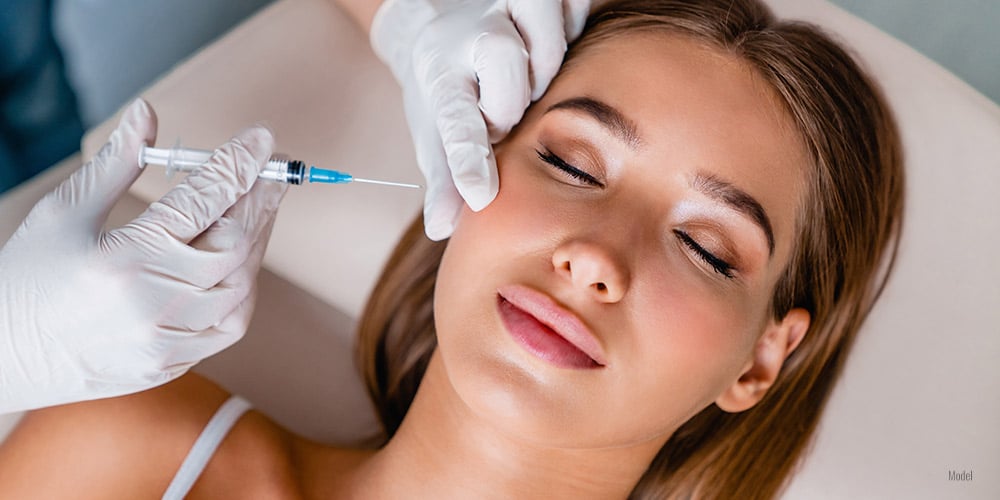
For those looking to improve their bitchy resting face expressions without surgery, there are several effective non-surgical options available. Treatments such as BOTOX® Cosmetic injections, dermal fillers, and facial exercises can significantly enhance appearance and boost self-esteem.
These non-surgical methods are preferred for their lower risk, minimal downtime, and immediate results. These treatments can address specific concerns related to resting bitch face and other facial expressions, helping individuals achieve a more neutral and approachable look.
Examining these non-surgical options in detail can reveal how they help improve less-than-pleased expression.
BOTOX® Cosmetic Injections
BOTOX® Cosmetic or Dysport® injections are a popular non-surgical option for addressing “resting bitch face” (RBF) caused by etched lines and muscle-related issues. BOTOX® Cosmetic can contribute to a more pleasant facial expression by relaxing and smoothing frown lines. The glabella, the area between the eyebrows, is commonly treated to improve resting bitch face.
Facial contouring can work alongside BOTOX® Cosmetic injections to offer a more holistic approach to enhancing expressions associated with resting bitch face.
A qualified plastic surgery clinic administers these injections and can provide quick and noticeable improvements. BOTOX® Cosmetic treatments are particularly effective for reducing the appearance of a permanent frown, making the face appear more relaxed and friendly.
Dermal Fillers
Dermal fillers are another effective non-surgical option for improving resting facial expressions. These fillers add volume to areas like the cheeks, lips, and under-eye regions, enhancing facial contours and creating a more youthful appearance. Dermal fillers can be effectively enhanced by incorporating facial contouring, offering a more holistic approach to refining resting facial expressions. Fillers are popular for their immediate results in addressing specific facial concerns.
Common areas for filler application include the cheeks, which can help lift and define the face, and the lips, which can create a fuller and more balanced look. Plastic surgeons apply fillers, which can greatly enhance a person’s look.
Facial Exercises
Facial exercises are a non-invasive way to tone facial muscles, enhance flexibility, and contribute to a more relaxed demeanor. Regular practice of these exercises can improve blood circulation, increase skin vitality, and reduce signs of aging. Facial exercises can also help improve facial symmetry, making the face appear more balanced and attractive. Common exercises include pouting, smiling widely, and raising eyebrows, which target specific facial muscles.
Adding facial exercises to your daily routine can noticeably improve your resting expression, making you appear more friendly and approachable. These exercises are simple to perform and can be done at home, making them an accessible option for everyone.
Surgical Options for Bitchy Resting Face Improvement
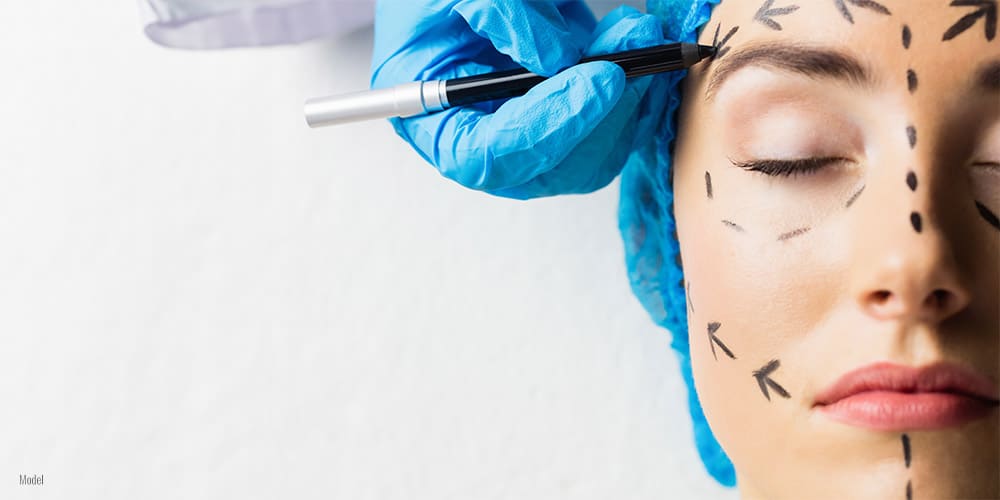
Plastic surgery options are available for those seeking more permanent solutions to improve their resting face. Procedures such as brow lifts, blepharoplasty, chin augmentation, lower face and neck lifts, lip lifts, and facial fat injections can significantly enhance facial appearance. Facial contouring is another surgical option that can significantly enhance facial appearance and improve resting facial expressions. Consulting with qualified plastic surgeons is crucial to determine the most appropriate procedure for your needs.
Surgical interventions can provide long-lasting results and address specific concerns related to resting bitch face and other facial expressions. Exploring these surgical options in detail can help us understand their benefits and what they entail.
Brow Lift
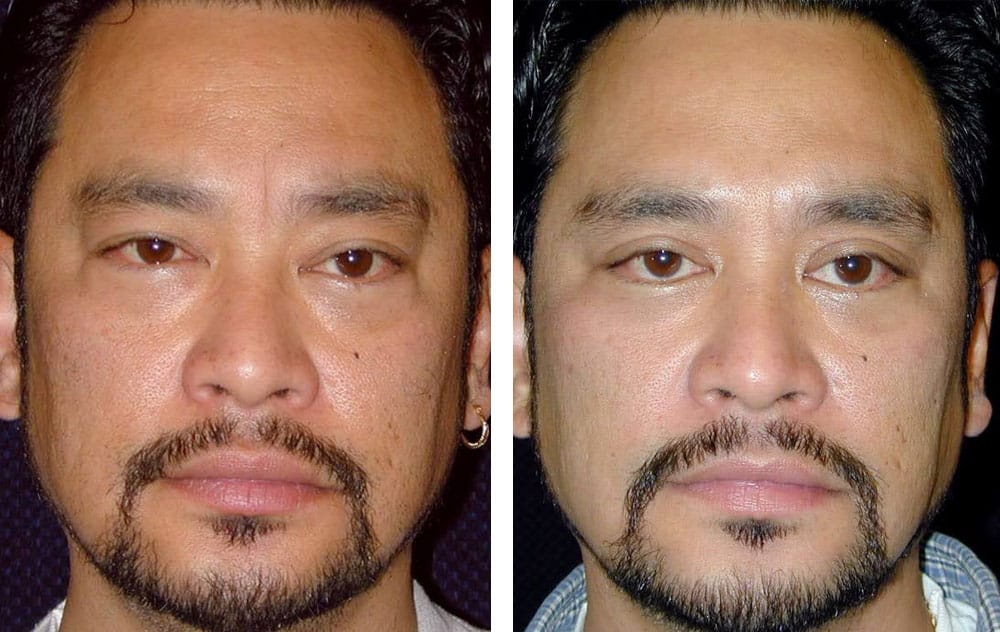
A brow lift is a surgical procedure that lifts and tightens the brow and forehead area, resulting in a smoother and more youthful appearance. There are two main types of brow lifts: coronal and endoscopic. An endoscopic brow lift involves short scalp incisions and is less invasive, while a coronal brow lift requires an incision behind the hairline, often addressing the glabella region.
A brow lift can also improve facial symmetry, making the face appear more balanced and attractive.
The procedure can address a permanent frown and create a more open and alert expression, making the face appear less stern and more approachable. Consulting with a skilled plastic surgeon can help individuals achieve their desired outcomes and improve their resting facial expressions.
Blepharoplasty
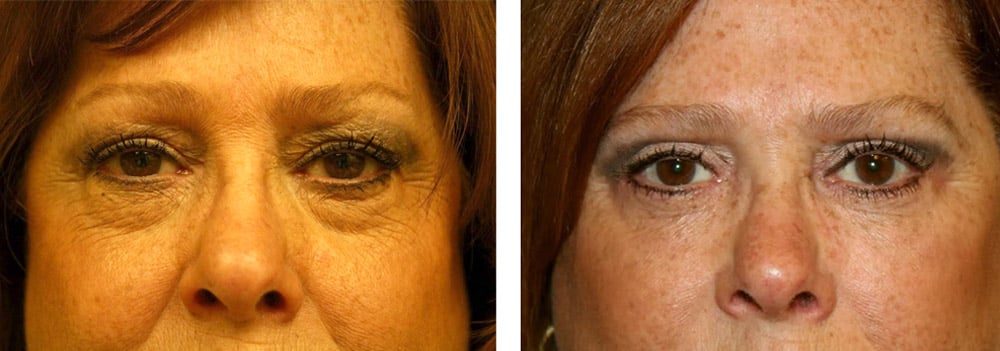
Blepharoplasty, or eyelid surgery, involves removing excess skin and fat from the upper and lower eyelids. This procedure provides smoother upper lids, more open eyes, and a youthful appearance.
Blepharoplasty can also improve facial symmetry, making the eyes appear more balanced and attractive.
It effectively addresses droopy eyelids or dark circles, improving the overall look of the resting face.
Chin Augmentation
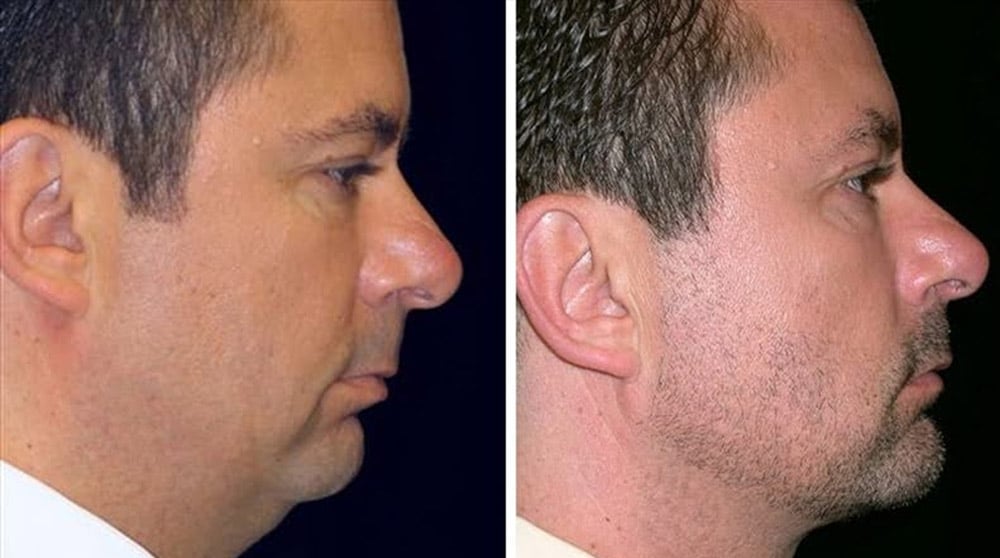
Chin augmentation reshapes the jawline to create a more balanced and defined facial appearance. Enhancing the chin’s structure can improve facial symmetry, making the resting expression appear more harmonious and aesthetically pleasing.
Lower Face and Neck Lift
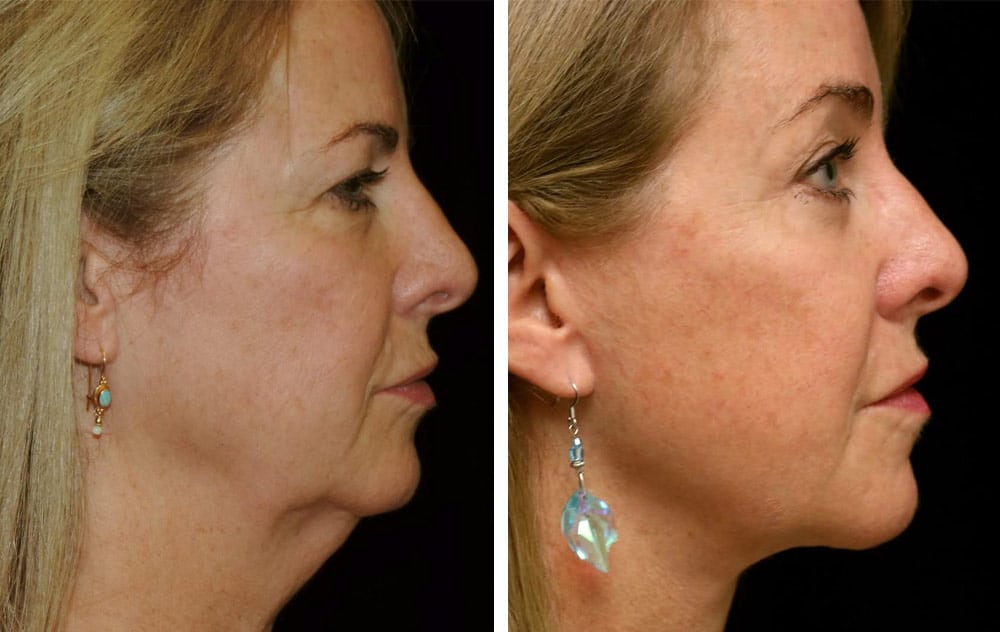
A lower facelift can lift the jowl region and neckline, reshaping the jawline and enhancing facial appearance. A lower face and neck lift can also improve facial symmetry, making the face appear more balanced and attractive. This procedure can significantly reduce the signs of aging, such as sagging skin and jowls, creating a more youthful and refreshed look.
Lip Lift
A lip lift can correct the turned-down corners of the mouth, creating a slight, youthful smile at the mouth’s corners. This subtle change can drastically improve the friendliness and approachability of one’s resting face, making it appear more inviting.
A lip lift can also improve facial symmetry, making the lips appear more balanced and attractive.
Facial Fat Injection
Facial fat injections increase the volume of the face, giving it more vitality and a youthful look. This procedure involves transferring fat from other parts of the body to the face, enhancing facial contours, and improving the expression.
Facial fat injections can also improve facial symmetry, making the face appear more balanced and attractive.
Expert Consultation and Realistic Expectations

Consulting qualified plastic surgeons is crucial for safe and effective plastic surgery facial improvements, ensuring patients receive personalized advice and treatment plans tailored to their needs and goals.
Discussing facial symmetry with a plastic surgeon can help set realistic expectations and achieve a more balanced and attractive appearance.
Non-surgical methods can enhance facial expressions and boost self-esteem, while surgical options offer more permanent solutions.
Consulting Qualified Plastic Surgeons
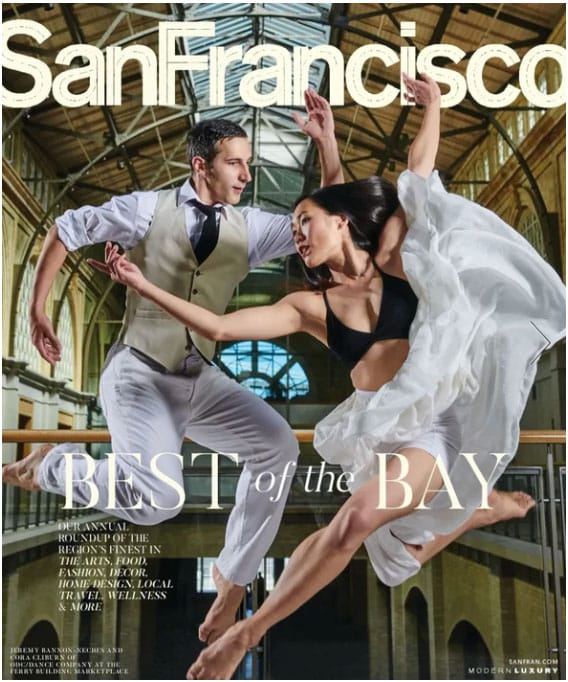
Choosing a skilled plastic surgeon like Dr. Delgado, who has been named the top plastic surgeon in San Francisco, is essential for achieving the desired outcomes. Discussing facial symmetry with a plastic surgeon can help set realistic expectations and achieve a more balanced and attractive appearance. Dr. Delgado’s expertise and positive patient reviews highlight the importance of selecting a surgeon with a proven track record.
Many patients report high satisfaction with their results, often praising Dr. Delgado’s expertise and support during their treatment journey.
Setting Realistic Expectations
Maintaining realistic expectations is important since cosmetic surgery can enhance a person’s appearance but not entirely transform their facial structure. Patients should recognize that while surgical interventions can improve facial features, significant changes to one’s facial structure may not be achievable.
Discussing facial symmetry with a plastic surgeon can help set realistic expectations and achieve a more balanced and attractive appearance.
Dr. Delgado’s Patient Reviews and Locations
Dr. Delgado’s patients frequently commend him for his attentive care and transformative results. They appreciate his professionalism and the quality of care provided by his staff, often highlighting the positive changes they experience.
Many patients report high satisfaction with their results, often praising improvements in facial symmetry and appearance.
Dr. Delgado operates out of multiple locations, including San Francisco and Marin County, making his services accessible to a wide range of patients.
Office Locations

Dr. Delgado’s primary office is located at 450 Sutter St, Suite 2433, in San Francisco. He also serves patients at the Marin Cosmetic Surgery Center in Novato. Patients can discuss facial symmetry and other concerns with Dr. Delgado at his San Francisco and Marin County locations. These locations ensure that patients from the San Francisco Bay Area can easily access his expertise.
Summary
Understanding the different types of resting faces and their causes is crucial for addressing and improving these expressions. Whether it’s Resting Bitch Face, Tired Resting Face, or Angry Resting Face, there are various non-surgical and surgical options available to help enhance your appearance and boost self-esteem. Improving facial symmetry can be achieved through various treatments, enhancing appearance and self-esteem. Consulting with a qualified plastic surgeon like Dr. Delgado can provide personalized advice and effective treatments to achieve your desired outcomes.
With the right approach, you can transform your resting face into a more pleasant and approachable expression. Embrace the changes and enjoy the positive impact they can have on your social interactions and well-being.
Frequently Asked Questions
What Is RBF (“resting bitch face”)?
“Resting bitch face”—or RBF—can create the perception of annoyance or anger, especially when a person is relaxed. The term gained popularity around 2013, largely due to media coverage and viral content. Studies indicate that both men and women can exhibit RBF, challenging the notion that it is primarily a female condition.
Improving facial symmetry can be achieved through various treatments, enhancing appearance and self-esteem.
Research has suggested that facial expressions like RBF can influence perceptions of trustworthiness. According to the research, public figures like Kanye West and Kristen Stewart occasionally wear expressions that appear less than pleased, which can reveal deeper emotional states. Individuals are increasingly seeking options to alter their resting facial expressions.
Can both men and women have RBF?
Indeed, both men and women can experience RBF, contradicting the common belief that it primarily affects women. Gender does not limit this phenomenon.
Facial symmetry can also influence how RBF is perceived, with more symmetrical faces often seen as less harsh.
What are some non-surgical options to improve resting facial expressions?
BOTOX® Cosmetic injections, dermal fillers, and facial exercises are effective non-surgical options to improve resting facial expressions. Facial contouring is another non-surgical option that can significantly enhance appearance and boost self-esteem. These treatments not only enhance appearance but also increase self-esteem.
How does aging affect resting facial expressions?
Aging significantly impacts resting facial expressions by diminishing skin elasticity and muscle tone, resulting in droopy eyelids and deeper lines. Consequently, these changes can create a more fatigued or somber appearance.
Facial contouring can help address the signs of aging, providing a more youthful and refreshed appearance.
What should I consider when choosing a plastic surgeon?
When selecting a plastic surgeon, prioritize their qualifications, experience, and patient reviews to ensure safe and successful results. A proven track record is essential for a positive surgical experience.
Discussing facial symmetry with a plastic surgeon can help set realistic expectations and achieve a more balanced and attractive appearance.



